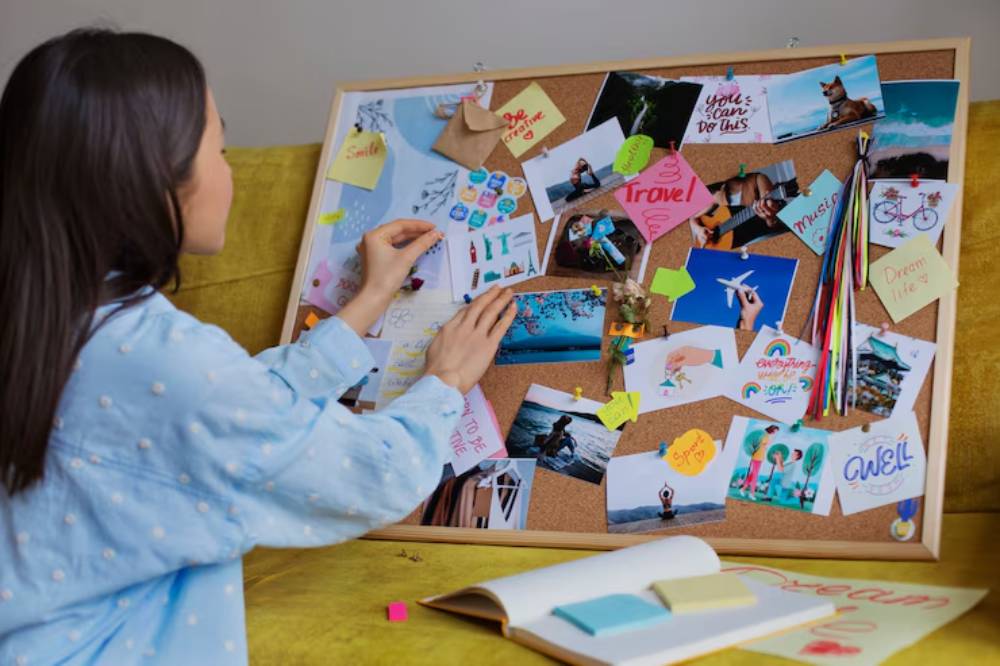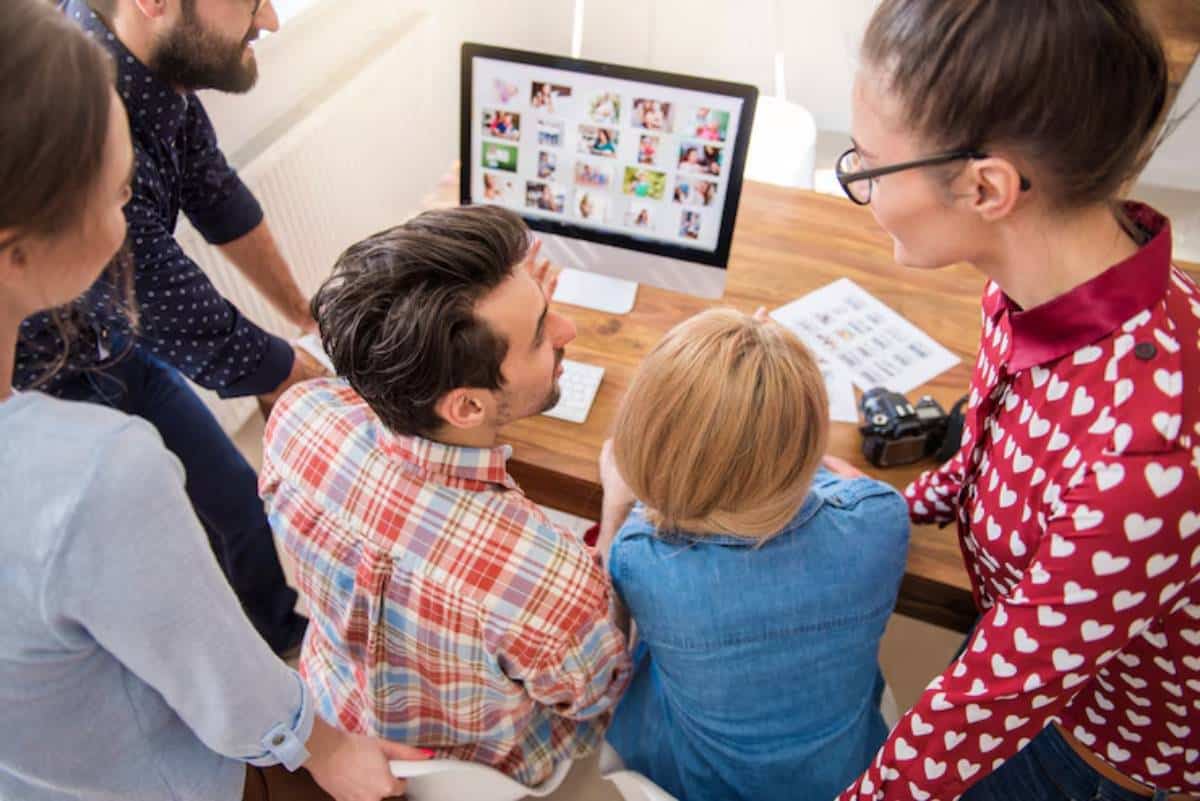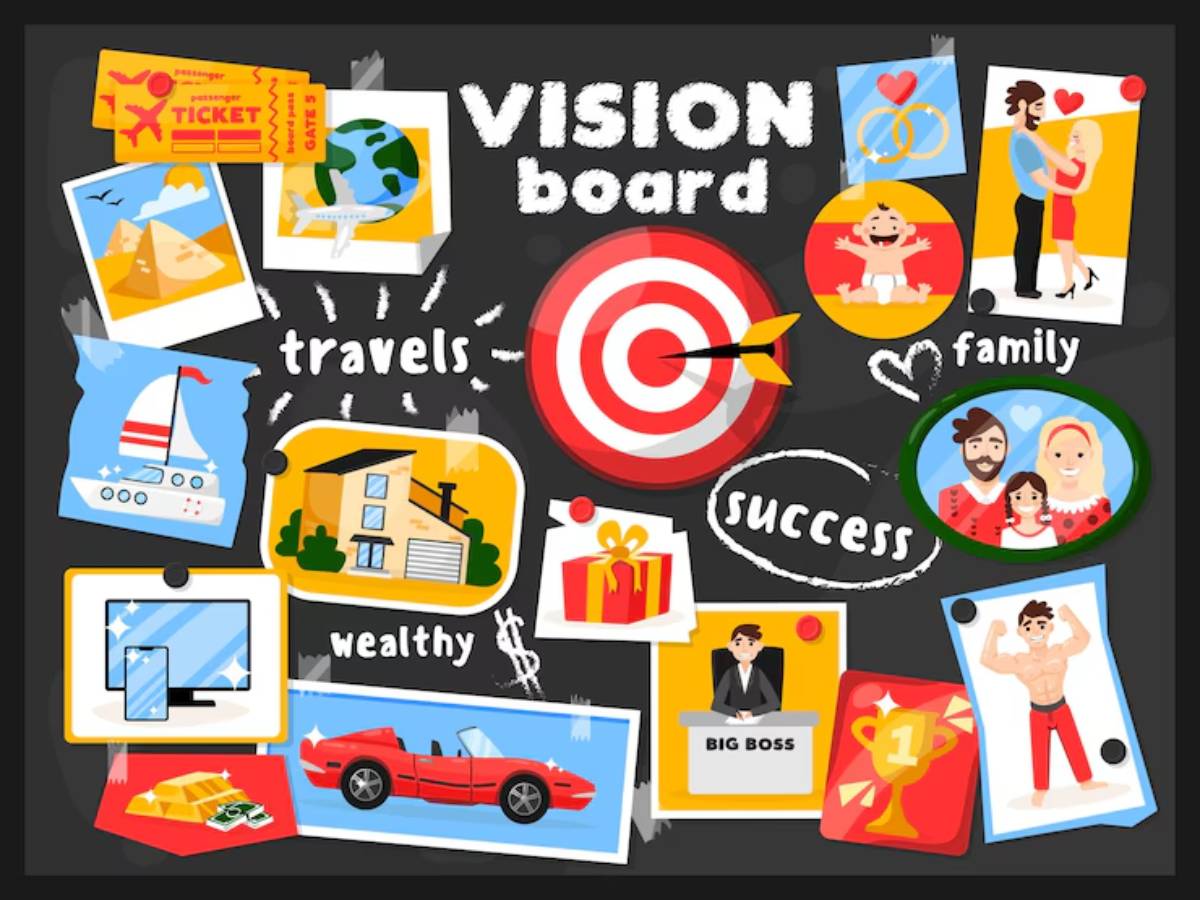
The Psychology Behind Why Vision Boards Work
There’s something almost childlike about cutting out pictures, pasting them to a board, and dreaming about the future. But behind that creative exercise lies something far more powerful than glue and paper. It’s neuroscience. Psychology. The way the human brain interacts with images, goals, and emotions.
This isn’t just a feel-good ritual. It’s a mechanism that, when used correctly, helps align thought, action, and outcome. And for those who ask whether it’s just a Pinterest-inspired placebo—this post breaks down exactly why vision boards work, from a psychological perspective.
So if you’ve ever wondered how images on a board can influence life decisions, shape motivation, and pull dreams into reality, let’s explore the deep connection between goal visualisation, mental imagery success, and your brain’s goal-setting pathways.
Vision Boards and the Brain: A Natural Match
Here’s the big idea: the brain can’t always tell the difference between something vividly imagined and something real.
That means when you stare at a vision board filled with visuals of the life you want, the subconscious mind begins to treat it as if it’s already happening—or at least, already possible.
This process is rooted in mental imagery, which activates many of the same brain regions as real experiences. And it’s why elite athletes practice imagining their routines with the same intensity as they train physically.
Your brain creates a neural representation of success before it actually happens. The vision board becomes the training ground.
The Power of Goal Visualisation

Goal visualisation is exactly what it sounds like: mentally picturing your desired future. Not in vague, abstract terms—but in vivid, sensory-rich scenes.
Here’s what happens when people do this regularly:
- Motivation increases
- Focus sharpens
- Emotional resilience builds
- Behavioural alignment improves
But what separates a casual daydream from something that actually reprograms the mind?
Consistency + emotional engagement. A vision board provides both.
Every time you see those images, you’re practicing success—triggering the parts of the brain responsible for goal pursuit and decision-making.
Inside the Brain: The Role of the Reticular Activating System (RAS)
Let’s zoom in a bit.
In the brainstem lies a small but mighty bundle of nerves called the reticular activating system (RAS). Think of it as a filter for attention.
Every day, the brain is bombarded with millions of sensory inputs. The RAS decides what’s important and what can be ignored.
The kicker? The RAS is trained by repetition and emotional significance. If you repeatedly focus on certain goals—especially with visual triggers—the RAS starts spotlighting opportunities, people, and ideas that align with those goals.
That’s why someone who adds “write a book” to their vision board might suddenly start noticing writing workshops, author interviews, or publishing resources more often. The opportunities were always there—the brain just wasn’t prioritising them until now.
Emotion Fuels Action: Why Images Beat Words Alone
It’s not enough to say you want something. The brain responds to what it can feel and visualise.
Images have a fast track to the limbic system, the part of the brain that processes emotion. That’s why a single photo can spark longing, hope, or inspiration more instantly than a sentence ever could.
When vision boards are created with intention—using images that trigger real emotional responses—they activate this system. And once emotion enters the scene, motivation becomes more sustainable.
It’s the difference between writing “financial freedom” and placing a picture of a cosy, paid-off lake house that makes your heart swell.
Learn How Vision Boards Boost the Law of Attraction to explore the energy side of this powerful practice.
Mental Imagery Success: What Studies Say
Science has been exploring the power of mental imagery success for decades, especially in fields like sports, cognitive therapy, and education.
A few key findings:
- Basketball players who visualised free throws showed similar performance improvement as those who physically practised.
- Stroke patients using imagery techniques experienced better recovery in motor function.
- Students who visualised test-taking performed better than those who only studied facts.
In every case, vivid, emotionally engaged mental rehearsal prepared the brain and body for real-world action.
Vision boards leverage this same mechanism—but instead of rehearsing a single skill, they create a landscape for an entire life vision.
Vision Boards and Behavioural Alignment

One of the most underrated aspects of a vision board? How it changes small, unconscious behaviours.
When someone sees their dream lifestyle daily—maybe it’s a photo of hiking through Iceland, opening a boutique, or building a family—they begin making micro-decisions aligned with that life.
- They start saving more.
- They sign up for that online course.
- They have one less drink on a weeknight.
- They say no to the job offer that doesn’t feel right.
No dramatic overnight changes. Just steady shifts—nudged along by imagery, belief, and repetition.
That’s the brain goal connection in action.
Avoiding the Pitfall of Passive Dreaming
Vision boards are powerful. But they’re not magic. Here’s where things go sideways: when people treat them like a wishlist instead of a tool.
The brain responds best to action.
Yes, visualisation activates motivation. But implementation is what locks it in.
That means:
- Using your vision board as a guidepost, not a fantasy wall.
- Revisiting and updating it as goals evolve.
- Creating small action steps tied to each vision.
- Pairing visualisation with strategy.
Think of your board as a compass. It helps you choose the path. But you still have to walk it.
Tips for Maximising the Brain Goal Connection
Want your vision board to do more than look pretty? Here’s how to make it a real psychological ally.
1. Use Sensory-Rich Imagery
The more senses you engage, the more effective the visualisation. Choose images that not only show the goal, but also evoke how it would feel to live it.
2. Revisit It With Intention
Don’t let your board become wallpaper. Spend 2–5 minutes a day looking at it and visualising the experience as if it were happening now.
3. Speak the Goals Aloud
Pairing verbal affirmations with visual cues deepens the neural imprint. This taps into auditory learning and reinforces belief.
4. Tie Each Visual to an Action
Have a goal image of running a marathon? Add a sticky note: “Run 2 miles this Saturday.” This makes the goal neurologically active and actionable.
Real-Life Success Through Goal Visualisation
Vision board success stories are everywhere—career changes, relationships manifested, health goals reached. But beyond the highlight reels, what really changes is the person themselves.
Someone who regularly practices goal visualisation develops:
- Greater self-awareness
- Higher emotional intelligence
- More focus and confidence
- Better resilience when setbacks occur
These shifts create a domino effect—one that outlives the board itself.
Rewiring the Mind for Possibility
There’s a reason vision boards feel so personal, even sacred. They touch the invisible parts of a person’s future and ask, “What if?”
Backed by psychology, supported by science, and driven by human hope, vision boards become more than craft projects. They become neural playgrounds—where dreams are rehearsed, intentions are amplified, and action becomes aligned with vision.
And at the end of the day, they remind people that their minds aren’t just for remembering the past—they’re also for building the future.
Want help building a board that taps into both heart and brain? Check out Vision Board Techniques for Visual Learners for a guide on making your board speak your mind’s language.


